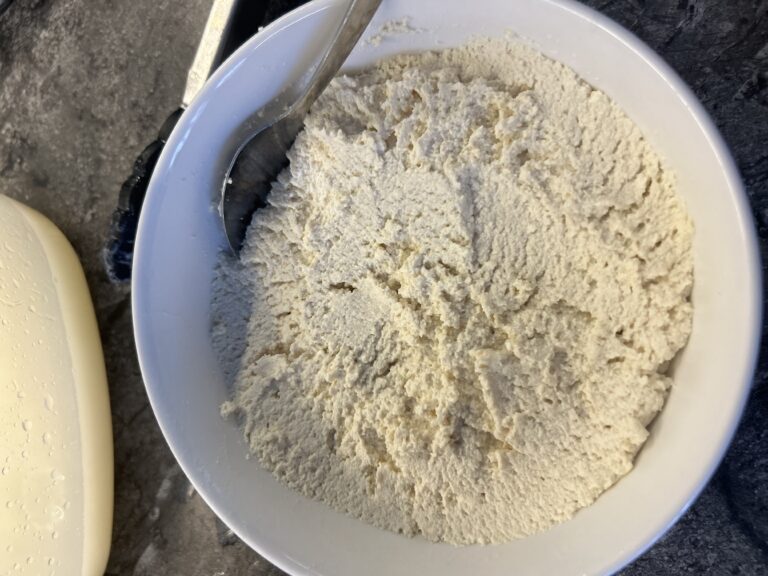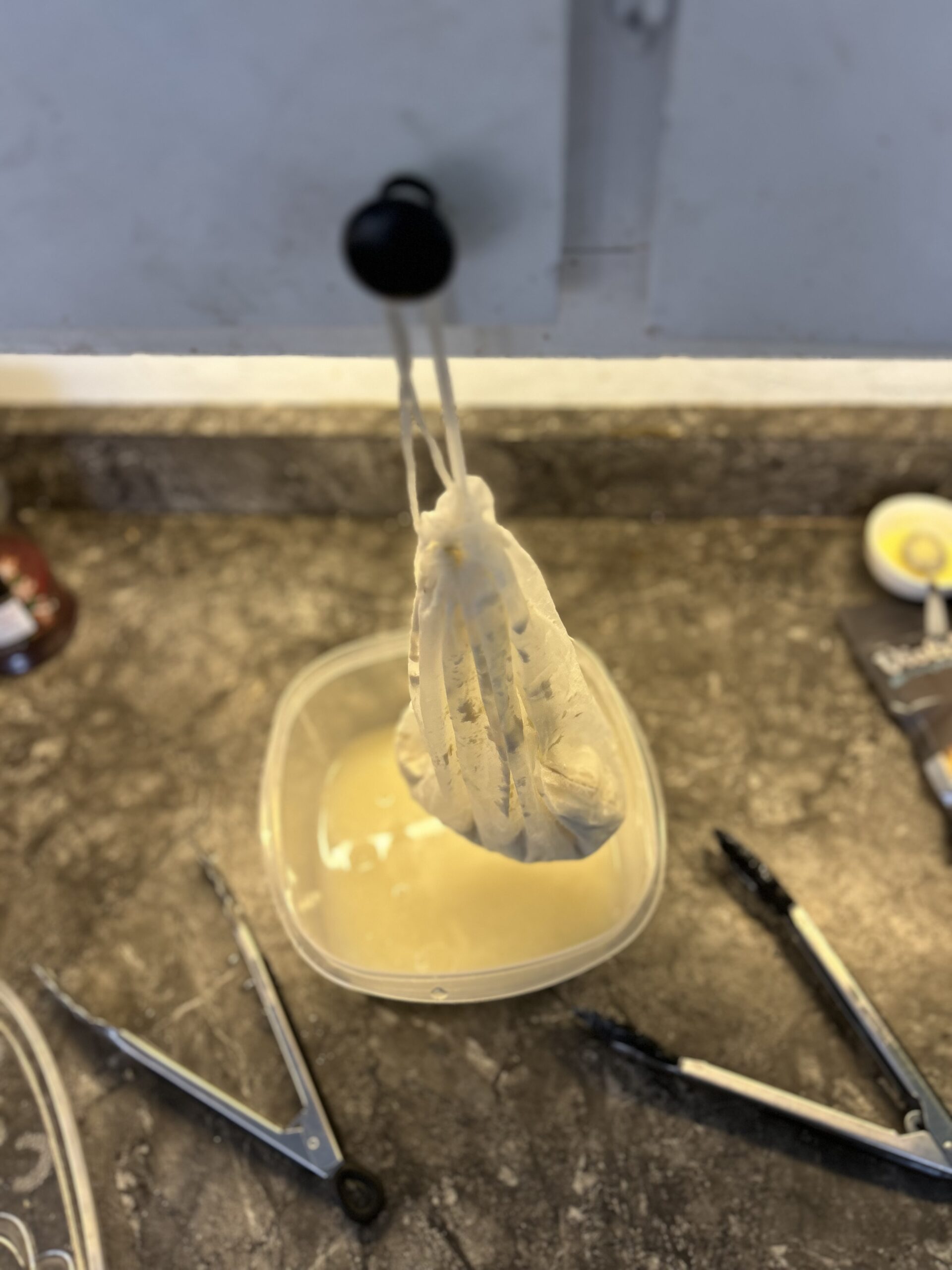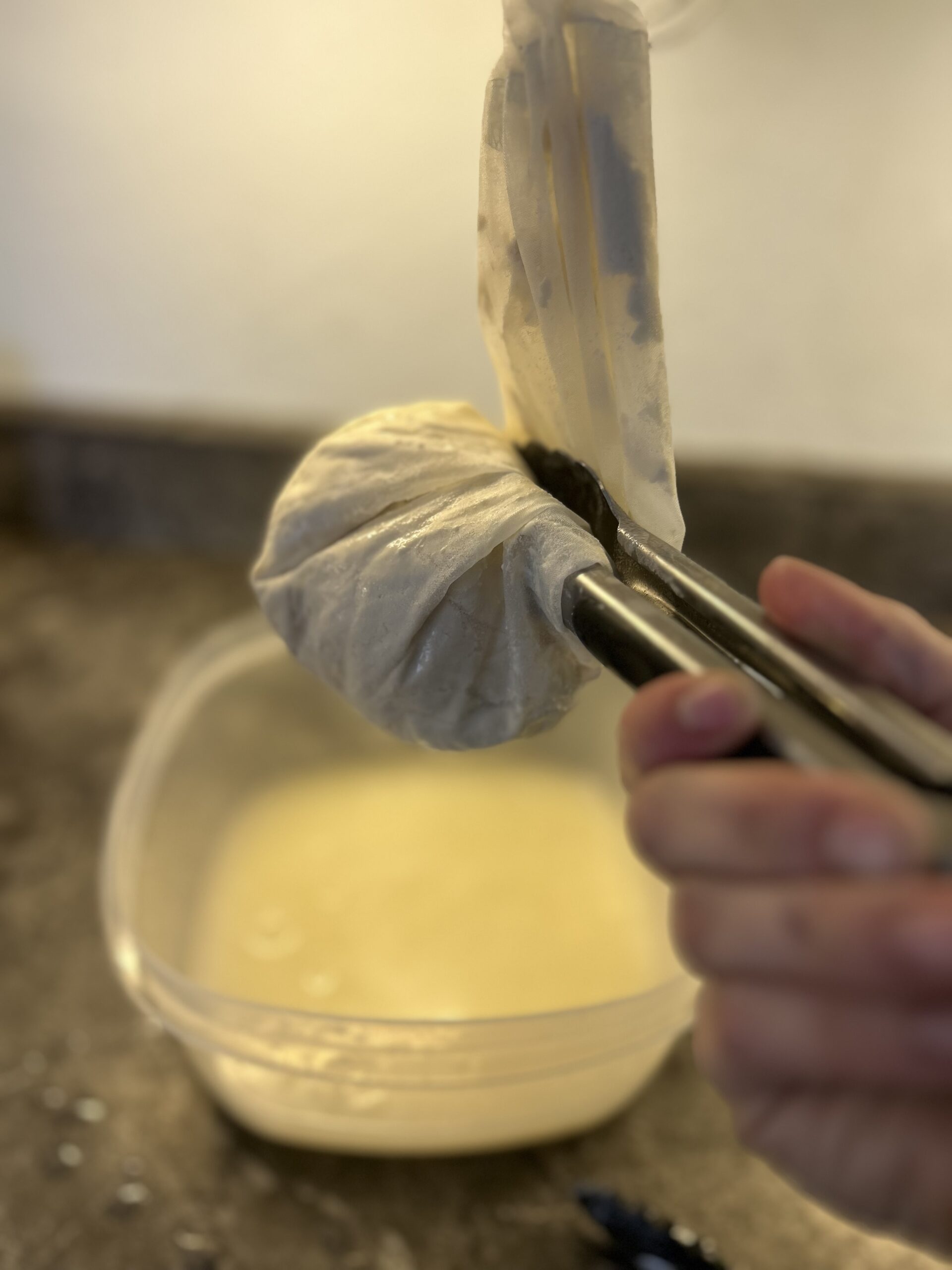The key to making ricotta is not about how old the whey is, but rather its acidity level. Ricotta is traditionally made by reheating the whey leftover from making other cheeses. This is because whey, which is the liquid byproduct of cheesemaking, still contains valuable whey proteins. Ricotta production specifically relies on using heat and acid to coagulate these remaining whey proteins, which are then strained to form the cheese.
While you can technically make ricotta using fresh whey, leaving the whey for a period of time, such as 24 hours, allows the acidity to increase, which can help to improve the yield. However, some cheeses leave whey with naturally lower acidity, so you may need to add more acid (like vinegar, lemon juice, or citric acid) to achieve a good yield.
You can’t generally make ricotta with fresh whey like you do for other cheeses, because the whey from those processes lacks the necessary casein proteins and fat for proper curd formation. Ricotta is traditionally made by heating the whey left over from cheesemaking, which contains albumin proteins that denature and form curds when heated. The fresh whet, on the other hand, contains much less casein and fat, and the albumin is already mostly denatured, resulting in a lower yield and different texture when attempting to make ricotta.
If you’re looking for a vegan ricotta that is also legume free, go here!
Print
Vegan Ricotta (with peas!)
- Total Time: 20
- Yield: 2 cups 1x
Ingredients
- 48 ounces (1419 mL) original ripple pea milk
- 1/4 cup (60 mL) white vinegar OR rice vinegar *See notes
- 1/16 tsp salt
Instructions
- Heat on medium high heat for 10-15 mins, or till it reaches a rolling boil. You do not need to stir.
- Take off from heat and pour into a nut bag over a large bowl.
- Let it sit, till its room temperature & then squeeze, till all the liquid is drained. (Instead, if you’re wanting it to be done quicker, you can hang your nut bag from a cabinet door knob and use tongs to squeeze out the piping hot liquid) like seen in photos:


- Take Ricotta out of nut bag & press it gently into an airtight container. Use right away or store for 2-3 weeks in fridge, and up to 6 months in freezer.
Notes
*if using a substitute, Do not use apple cider vinegar or lemon juice for this recipe. It will make your curds taste sour or like lemon.
